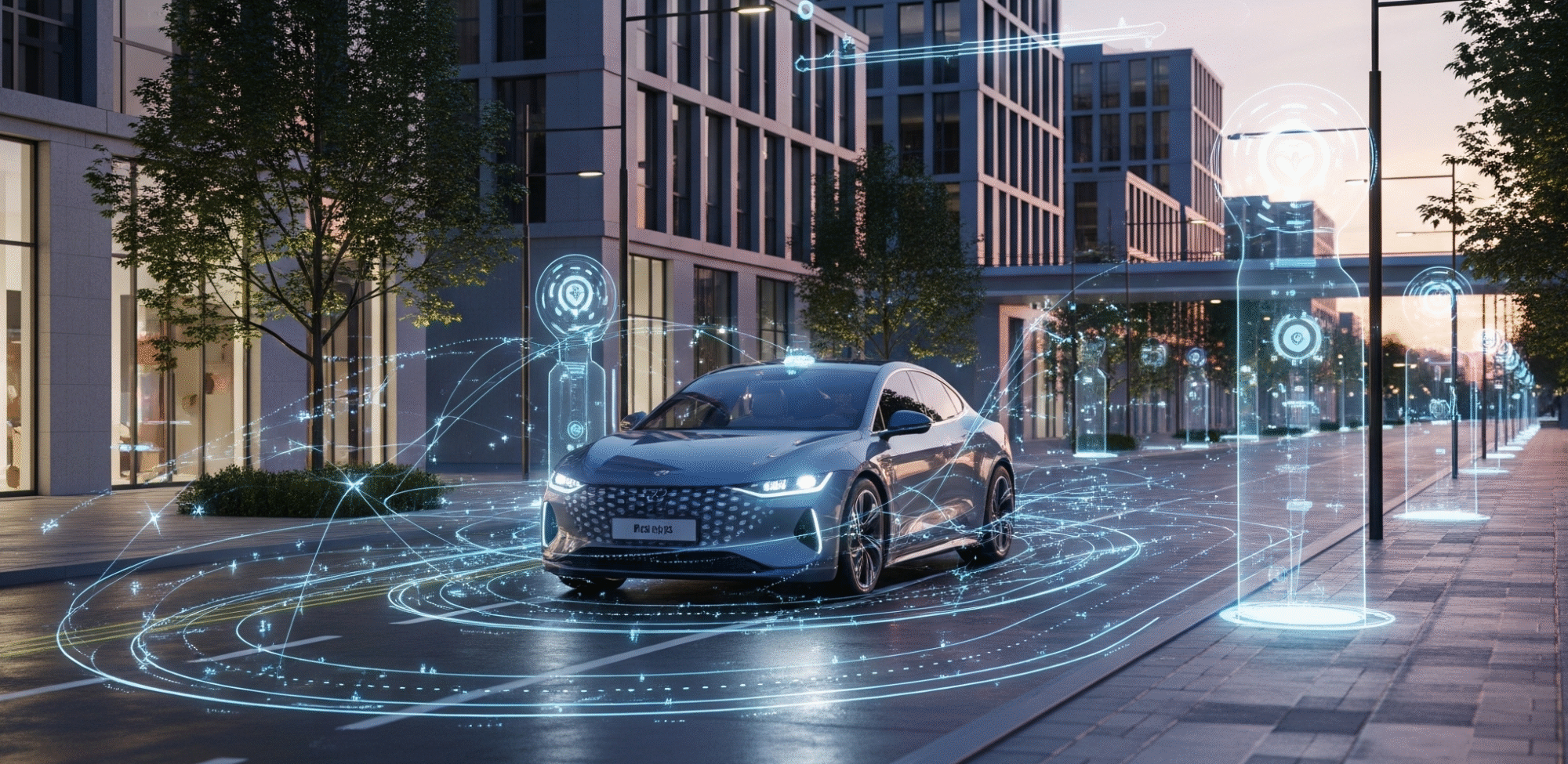
How AI is Revolutionizing the Automotive Industry: Driving the Future of Mobility
How AI is Revolutionizing the Automotive Industry: Driving the Future of Mobility
The sound of an engine, the open road, the freedom of movement – these have long defined the automotive experience. Yet, a silent, powerful revolution unfolds beneath the polished chrome and sleek lines. Artificial intelligence, once confined to science fiction, is no longer a futuristic idea. Instead, it is the primary force reshaping every facet of the automotive industry. From design and manufacturing to how we interact with our vehicles, AI in the automotive industry orchestrates an unprecedented transformation.
The integration of Artificial Intelligence in automotive rapidly creates a world where vehicles are not just machines. They become intelligent partners capable of learning, adapting, and anticipating our needs. It encompasses more than self-driving cars. AI optimizes design, streamlines manufacturing, enhances the driving experience through advanced assistance systems, and ensures vehicles remain in peak condition. This article will deeply explore how AI in the automotive industry redefines vehicle creation, enhances safety and efficiency, and ultimately paves the way for an intelligent tomorrow.
What is AI in the Automotive Industry? Defining the Driving Force
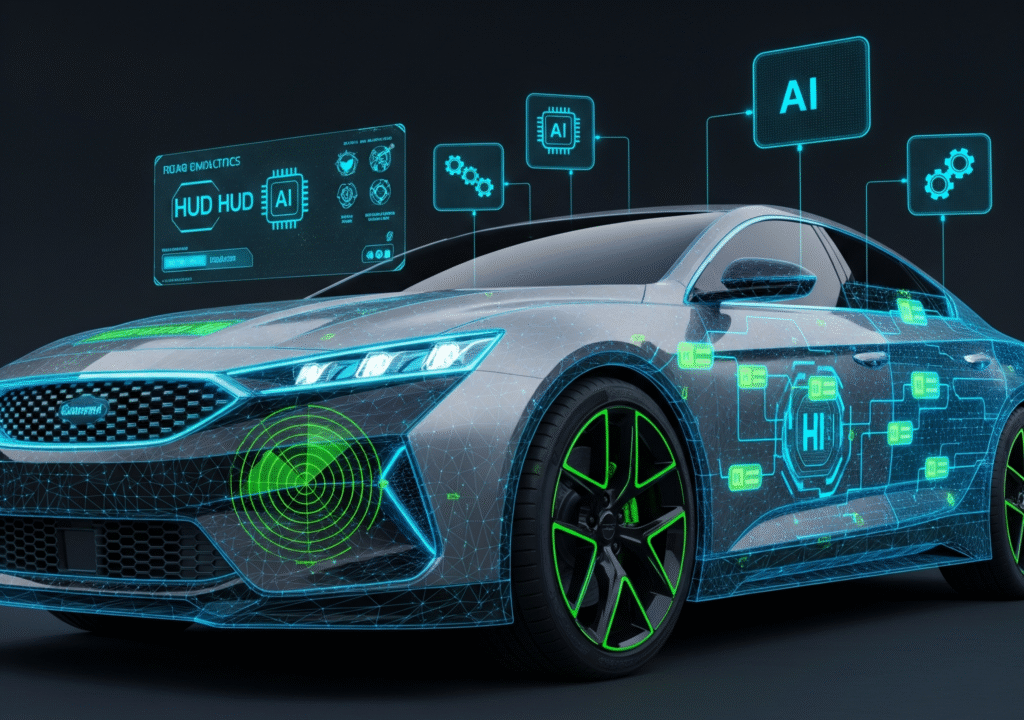
Beyond the futuristic headlines of self-driving cars, a fundamental question arises: what exactly is AI in the automotive industry? At its core, it refers to the strategic application of artificial intelligence technologies. These technologies meticulously collect, analyze, and identify intricate patterns within vast datasets. This includes data related to vehicles, drivers, and their surrounding environments. This sophisticated process enables informed, near-real-time decision-making for both human operators and, increasingly, automated systems.
Several key AI technologies power this revolution. Each plays a crucial role in bringing intelligence to vehicles and manufacturing processes:
- Machine Learning (ML): This AI subset allows systems to learn from data without explicit programming. In automotive contexts, ML algorithms analyze vast amounts of sensor data. This includes input from cameras, radar, LiDAR, driving patterns, and diagnostic information. They identify trends, predict outcomes, and adapt system behavior over time. For example, ML helps predict when a specific car part might fail based on historical data and current sensor readings.
- Deep Learning (DL): A more advanced form of ML, deep learning uses multi-layered neural networks. It processes complex, unstructured data like images and sounds. This is critical for tasks such as object recognition in autonomous driving, for instance, identifying pedestrians, other vehicles, and traffic signs. It also helps understand complex real-world scenarios.
- Computer Vision: Directly linked to deep learning, computer vision enables vehicles to “see” and interpret their surroundings. It processes visual data from cameras. This allows it to detect lanes, read traffic signs, identify obstacles, and understand traffic light signals. It forms the bedrock of advanced driver assistance systems and autonomous navigation.
- Natural Language Processing (NLP): NLP allows vehicles to understand and respond to human speech. This technology powers intuitive voice command systems in infotainment units. Drivers can control navigation, media, and climate settings simply by speaking. This enhances convenience and reduces driver distraction.
It is crucial to understand that the influence of AI in the automotive industry extends far beyond the captivating, yet still developing, realm of autonomous vehicles. While self-driving capabilities represent a significant frontier, AI’s pervasive impact touches every stage of a vehicle’s lifecycle. This includes its earliest design blueprints, efficient assembly on the factory floor, intelligent diagnostics, and personalized in-car experiences. It is an overarching technological force. It reshapes not just how we drive, but how cars are conceived, built, and maintained.
AI in Automotive Design and Prototyping: Engineering the Future on Screen
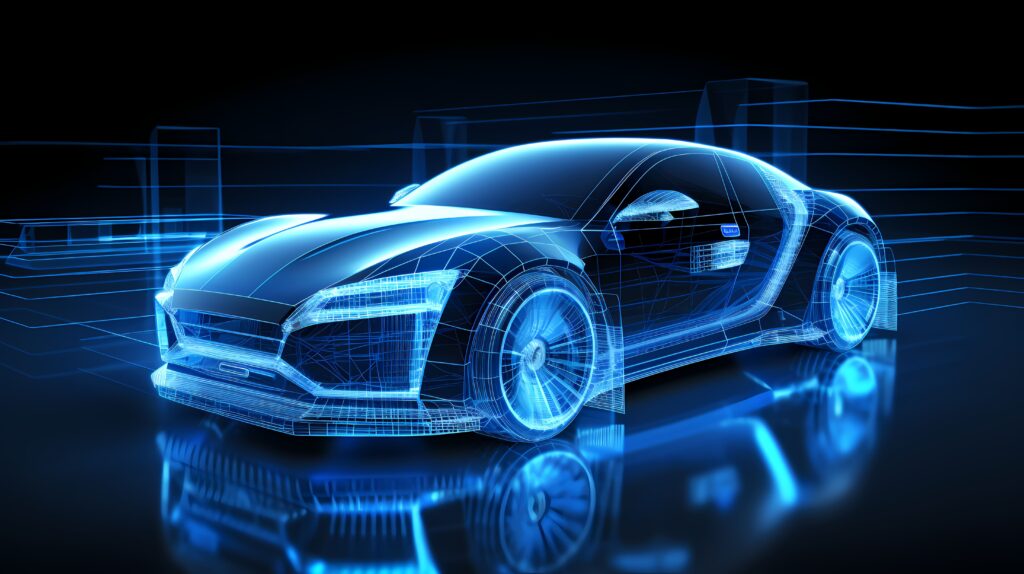
Before a single bolt is turned or a piece of metal is cut, the automotive industry relies heavily on design and prototyping. Traditionally, this was a painstaking, iterative process. It involved countless physical models and extensive testing. Today, AI in the automotive industry fundamentally transforms this initial phase. It accelerates innovation, reduces costs, and enables the creation of designs previously unimaginable.
Generative AI in Automotive Design: Unleashing Unconventional Forms
One of the most revolutionary applications of AI in this space is generative AI in automotive design. Instead of designers painstakingly drawing every line and curve, generative AI algorithms take a different approach. Engineers input specific goals and constraints. These include target weight, required material strength, desired aerodynamic properties, manufacturing methods (e.g., 3D printing), and cost limitations. The AI then autonomously explores an immense design space. It generates hundreds or even thousands of optimal design variations that meet those parameters.
This capability offers several profound benefits:
- Faster Iteration and Exploration: AI can generate design options in minutes or hours. This would take human engineers weeks or months to conceive. This rapid iteration allows designers to explore a much wider range of possibilities. This leads to more innovative and often unconventional solutions.
- Material Efficiency and Structural Integrity: Generative designs often feature organic, lattice-like structures. These are incredibly lightweight yet exceptionally strong. This optimized material usage not only reduces the vehicle’s overall mass but also contributes to better fuel efficiency or extended electric vehicle range. Furthermore, it enhances structural integrity and crashworthiness.
- Cost Reduction in Prototyping: By identifying optimal designs virtually, the need for numerous expensive physical prototypes significantly reduces. This saves both time and resources in the early development stages.
A Landmark Example: General Motors and Autodesk’s Seatbelt Bracket
A prominent case study showcasing the power of generative AI in automotive design involves General Motors (GM) and Autodesk. They applied generative design technology to redesign a critical component: a seatbelt bracket. The original bracket was a multi-part assembly. Through the generative design process, the AI system conceived a single-piece design. This design was not only 40% lighter but also 20% stronger than its predecessor. This single part consolidated what was originally eight different components. It significantly reduced material waste, assembly complexity, and associated supply chain costs. This innovation highlights how AI drives tangible improvements in both performance and manufacturing efficiency. (Source: Autodesk, All3DP)
Digital Twins and Simulation: Virtual Validation for Real-World Performance
Beyond generating designs, AI in the automotive industry plays a critical role in refining and validating them through advanced simulation. This often utilizes “digital twins.” A digital twin is a virtual replica of a physical object, system, or process. It continuously updates with real-time data. In automotive design, these digital twins allow engineers to simulate how various design decisions will impact the final product’s performance. This happens without the prohibitive cost and time associated with building and testing numerous physical prototypes.
Here’s how AI empowers digital twins in automotive development:
- Comprehensive Performance Prediction: AI and machine learning systems receive vast amounts of historical and real-time sensor data. This comes from existing vehicle fleets or test runs. They can predict how a new vehicle design will perform under a multitude of conditions. This includes simulating aerodynamics, structural integrity (crashworthiness), noise, vibration, and harshness (NVH), thermal management, and even battery performance in electric vehicles. They consider varying driving styles and environmental conditions.
- Accelerated Development Cycles: AI-powered simulations enable extensive virtual testing. They deliver results dramatically faster than traditional physics-based simulation workflows. Some estimates suggest AI-powered engineering workflows can be up to 1,000 times faster. This allows engineers to test and validate multiple designs in parallel. Consequently, this significantly compresses the product development timeline, bringing innovative vehicles to market quicker. (Source: Techbriefs.com).
- Multi-Objective Optimization: AI allows designers to optimize for several conflicting objectives simultaneously. For instance, a design might need to be lightweight for fuel efficiency, yet robust for safety, and also aesthetically pleasing. AI balances these complex trade-offs, providing solutions that achieve optimal performance across all criteria. This includes fine-tuning for comfort, manufacturability, and even ease of maintenance.
- Early Defect Identification: Identifying potential issues early in the design phase is crucial. Digital twins, powered by AI, can uncover design flaws or performance bottlenecks virtually. This happens long before physical production begins. This proactive problem-solving drastically reduces the risk of costly redesigns, manufacturing errors, and even recalls. Ultimately, it ensures a higher quality final product.
In essence, AI in automotive design and prototyping transforms the drawing board into a dynamic, intelligent environment. Here, innovation flourishes, efficiency reigns, and the future of mobility is engineered with unprecedented speed and precision.
How to Use AI in the Automotive Industry: Key Applications Driving Innovation
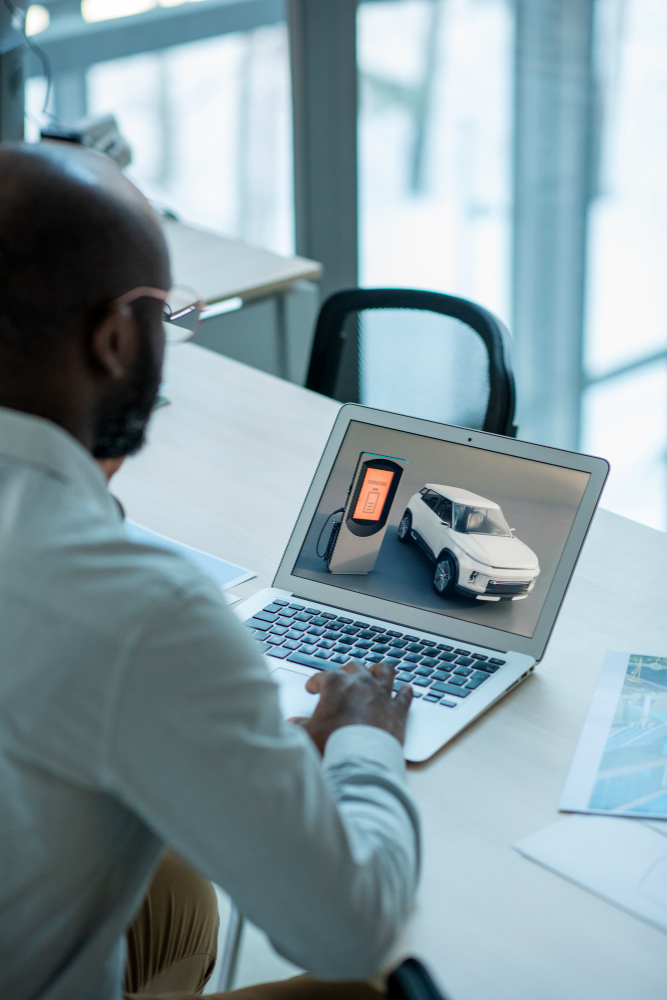
The conceptual brilliance of AI in design and prototyping finds its tangible manifestation in a wide array of applications. These applications actively reshape the automotive landscape. From making daily commutes safer to streamlining complex manufacturing processes, AI in the automotive industry acts as a versatile force driving unprecedented innovation.
Autonomous Driving: The Intelligent Navigator
Perhaps the most captivating application of AI in the automotive industry is the pursuit of autonomous driving. While fully self-driving cars (Level 5) are still on the horizon, significant strides have been made. These advancements are largely powered by sophisticated AI algorithms. These systems integrate data from a complex array of sensors. This includes cameras, LiDAR (Light Detection and Ranging), radar, and ultrasonic sensors. They create a real-time, 360-degree understanding of the vehicle’s environment. AI algorithms then process this massive influx of data in milliseconds. They perceive surroundings, predict the behavior of other road users, plan optimal paths, and execute precise control over steering, acceleration, and braking.
Leading the charge, Mercedes-Benz achieved a significant milestone with its DRIVE PILOT system. It received approval in Germany for conditionally automated driving (SAE Level 3). This system allows the driver to legally engage in other activities, such as watching movies or reading, under specific conditions. It operates on the entire German Autobahn network at speeds up to 95 km/h (59 mph). This makes it the fastest certified Level 3 system in a production vehicle as of early 2025. (Source: Mercedes-Benz Group).
Even more recently, Tesla marked a historic achievement on June 27, 2025. It completed the world’s first fully autonomous Model Y delivery from its Austin factory to a customer’s home. The vehicle traversed public highways at speeds up to 115 km/h (72 mph) without any human occupants or remote control. This demonstrated a significant leap towards Level 4 autonomy. (Source: AInvest, OpenTools). These advancements underscore the rapid progression and real-world capabilities being unlocked by AI in the automotive industry.
AI-Powered Driver Assistance Systems (ADAS): Enhancing Every Drive
While full autonomy develops, AI-powered driver assistance systems (ADAS) are already commonplace. They significantly enhance safety and convenience for millions of drivers daily. These systems leverage AI to provide proactive support. They mitigate human error and prevent accidents. Common ADAS features include:
- Adaptive Cruise Control: AI intelligently adjusts vehicle speed. It maintains a safe distance from the car ahead, even in stop-and-go traffic.
- Lane-Keeping Assistance: Using computer vision, AI helps the vehicle stay centered within its lane. It provides gentle steering corrections.
- Automatic Emergency Braking (AEB): AI analyzes sensor data. It detects potential collisions with vehicles, pedestrians, or cyclists. It can automatically apply brakes if the driver doesn’t react in time.
- Automated Parking Assist: AI guides the vehicle into parking spaces. It handles steering, acceleration, and braking with precision.
- Blind-Spot Detection: AI monitors blind spots. It warns the driver of vehicles or objects not visible in mirrors.
The adoption of these AI-powered features is growing exponentially. In 2025, approximately 53.6% of total global ADAS/autonomous driving system installations are projected to be Level 2 systems. This signifies their widespread integration as standard features in new vehicles across major markets like the US, Europe, China, and Japan. (Source: Yano Research).
AI Predictive Maintenance in Vehicles & Diagnostics: Proactive Care for Longevity
Maintaining a vehicle proactively is key to its longevity and reliability. Here, AI predictive maintenance in vehicles stands as a game-changer. AI algorithms analyze vast streams of data from a vehicle’s interconnected sensors (often referred to as the Internet of Things, or IoT, in vehicles). They identify subtle anomalies and predict potential component failures before they occur. This could include predicting the wear and tear on brakes, the health of a battery pack in an EV, the performance of engine components, or the optimal time to replace tires.
- Benefits: This proactive approach drastically reduces unscheduled downtime. It minimizes costly emergency repairs, extends the lifespan of critical components, and allows for more efficient scheduling of maintenance. Automakers can even notify drivers of impending issues. This enables them to address problems before they escalate into major breakdowns.
- AI in Vehicle Diagnostics: When a problem does arise, AI enhances traditional vehicle diagnostics. Instead of manual troubleshooting, AI systems rapidly analyze error codes, sensor readings, and historical data. They pinpoint the root cause of a fault with greater accuracy and speed. This reduces diagnostic time and ensures more precise repairs.
- Industry Example: Hyundai Transys, a key automotive system manufacturer within the Hyundai Motor Group, implemented its self-developed AI system, “Transys Advanced Data Analytics (TADA),” in its production sites. TADA uses deep learning AI for vision inspection during manufacturing and assembly. It improved inspection accuracy from 93% to an impressive 99.9%. Furthermore, this AI technology analyzed gear durability test data in R&D. It reduced the time to determine damaged areas from 24 hours to just one hour. (Source: Hyundai Transys).
Manufacturing and Quality Control: The Smart Factory
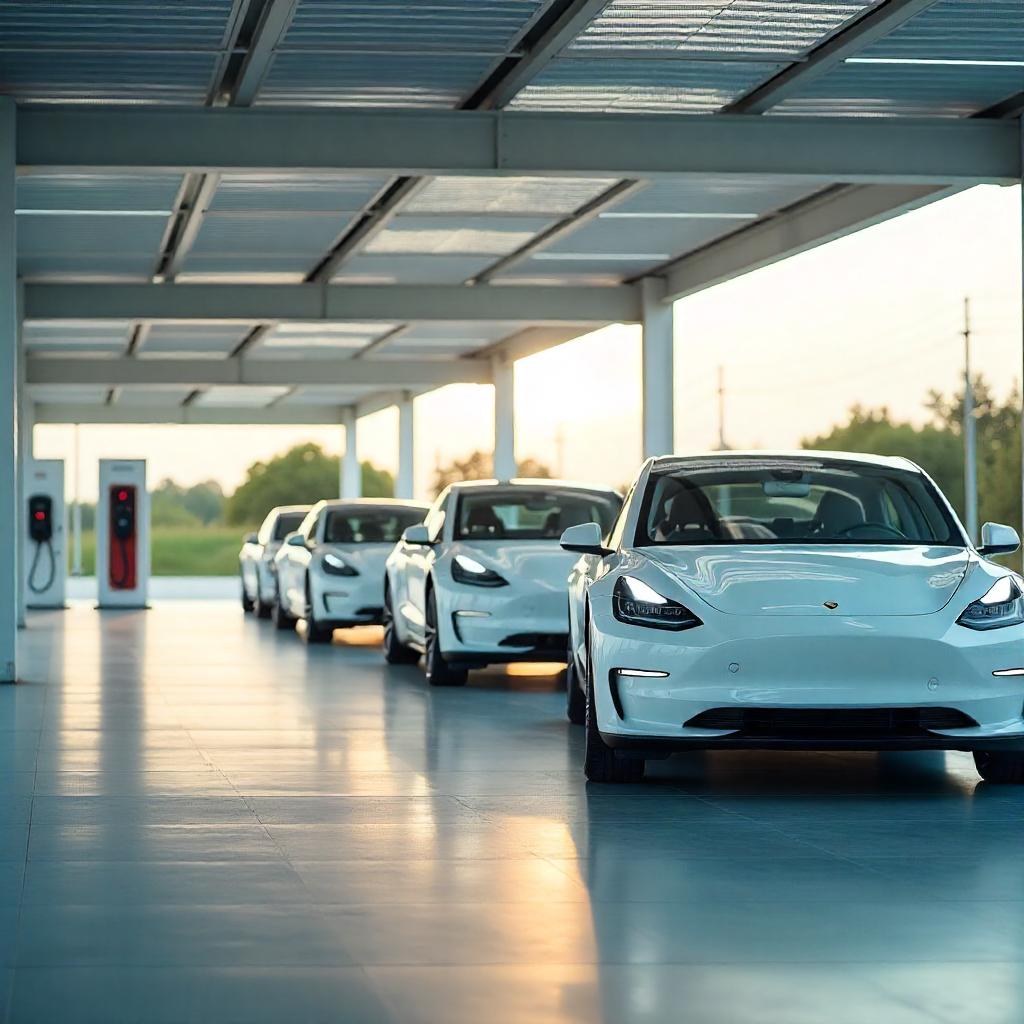
The production line is another area where AI in the automotive industry drives significant advancements. “Smart factories” leverage AI-powered robotics, computer vision, and machine learning. They enhance efficiency, precision, and quality control.
- Automated Inspections: AI-powered computer vision systems inspect vehicles for defects with unparalleled speed and accuracy. They identify even microscopic flaws that human eyes might miss. This leads to higher product quality and a reduction in costly recalls. BMW, for instance, implemented the “GenAI4Q” pilot project at its Regensburg plant. Here, an AI system generates tailored inspection recommendations for each of the approximately 1,400 vehicles manufactured daily. This significantly optimizes their quality control processes. (Source: BMW Group PressClub).
- Robotics and Process Optimization: AI algorithms optimize the movements of robotic arms on the assembly line. They ensure perfect synchronization and precision. This reduces manufacturing errors, speeds up production, and even saves costs. At BMW’s Spartanburg plant, AI-driven stud placement and correction not only ensured precise placement but also led to over $1 million in annual savings. This happened by optimizing workflows and redeploying workers. (Source: Disruption Hub).
- Predictive Manufacturing: AI analyzes production data. It anticipates equipment failures, optimizes maintenance schedules for machinery, and predicts potential bottlenecks. This ensures smoother and more efficient operations.
Supply Chain Management: Intelligent Logistics
A complex web of suppliers and logistics underpins automotive manufacturing. AI in the automotive industry optimizes this intricate supply chain:
- Demand Forecasting: AI analyzes historical sales data, market trends, and even external factors like economic indicators. It predicts future demand with greater accuracy. This helps manufacturers avoid overproduction or shortages.
- Inventory Optimization: AI systems manage inventory levels. They ensure that parts are available when needed without excessive stockpiling. This reduces holding costs.
- Logistics and Routing: AI algorithms optimize delivery routes. They manage warehouse operations and improve real-time tracking of components. This leads to faster and more cost-effective supply chains.
Personalized In-Car Experiences: The Intuitive Companion
Modern vehicles evolve into personalized digital hubs, largely thanks to AI. AI in the automotive industry enables:
- Voice Assistants and Natural Language Understanding: Advanced AI-driven voice recognition systems go beyond simple commands. They understand natural language, context, and even driver intent. This allows for intuitive control of navigation, entertainment, climate, and communication. Systems like the Mercedes-Benz User Experience (MBUX) learn driver preferences over time. They adapt settings and offer personalized suggestions.
- Customized User Profiles: AI creates and manages individual driver profiles. It automatically adjusts seat positions, mirror settings, climate control, preferred music genres, and even dashboard layouts. These adjustments are based on who is in the driver’s seat.
- Biometric Integration: Emerging applications include facial recognition for vehicle access and personalized settings. Fingerprint digitization can also enable secure starting and profile authentication.
Vehicle Security and Cybersecurity: Protecting the Connected Car
Vehicles become increasingly connected and software-defined. Therefore, the importance of robust security grows exponentially. AI in the automotive industry plays a critical role in safeguarding these smart vehicles from cyber threats.
- Intrusion Detection Systems (IDS): AI-powered IDS continuously monitor the vehicle’s network traffic and internal systems. They look for any anomalous behavior or unauthorized access attempts. These could indicate a cyberattack. These systems detect sophisticated threats that might bypass traditional security measures.
- Predictive Threat Analysis: AI analyzes global threat intelligence and historical attack patterns. It anticipates new vulnerabilities and potential cyberattacks before they occur. This allows automakers to issue proactive software updates.
- Secure Over-the-Air (OTA) Updates: AI helps secure the delivery and installation of software updates to connected vehicles. It prevents malicious actors from injecting malware or exploiting update processes.
- Facial Recognition and Biometric Authentication: Beyond personalization, AI-driven biometrics can be used for advanced vehicle access control. This ensures only authorized individuals start or operate the car. It adds another layer of physical and digital security.
- Digital Twins for Cyber Resilience: As mentioned earlier, digital twins are increasingly used to simulate potential cyber-attack scenarios. They test the resilience of vehicle systems. This refines cybersecurity strategies in a virtual environment before real-world deployment. (Source: Cisco Investments).
These diverse applications demonstrate that AI is not just a niche technology. Instead, it is a pervasive, indispensable force across the entire automotive value chain. It makes vehicles smarter, safer, and more connected than ever before.
What is the Future of AI in the Automotive Industry? Paving the Road Ahead
The present applications of AI in the automotive industry are undeniably transformative. However, they only lay the groundwork for an even more radical future. As AI technologies mature and integrate deeper into vehicle ecosystems, we stand on the cusp of an intelligent mobility era. This era promises unparalleled safety, efficiency, and personalization.
Accelerated Autonomous Vehicle Rollout and Evolution
The future will undoubtedly see the widespread adoption of increasingly autonomous vehicles. The journey to full (Level 5) autonomy is complex, yet the progression from Level 3 to Level 4 and Level 5 accelerates.
- Growing Market Penetration: Experts predict a significant shift. By 2030, 60% of new vehicles sold will likely have at least Level 2 autonomy. This demonstrates the foundational presence of these systems. More ambitiously, Level 4 and Level 5 fully autonomous vehicles are expected to account for 15-20% of global vehicle sales by 2030. The global autonomous vehicle market itself is projected to reach an astounding $2.1 trillion by 2030. This underscores the immense investment and confidence in this sector. (Source: PatentPC, June 2025). Some projections even suggest that 80% of new cars will integrate AI technologies at their core by 2035. This will reshape how we travel entirely. (Source: Microchip USA, January 2025).
- Role of Simulation and Virtual Testing: The path to widespread autonomy relies heavily on advanced simulation environments. AI-driven virtual testing allows manufacturers to rapidly test countless “edge cases.” These are rare or extreme scenarios. It would be impossible or unsafe to replicate them in physical road tests. This accelerates the development and validation of self-learning AI systems. It ensures they are robust and reliable before real-world deployment.
Vehicle-to-Everything (V2X) Communication & Smart Infrastructure
The future of AI in the automotive industry is inherently connected. Vehicles will no longer operate in isolation. Instead, they will communicate seamlessly with their surroundings through Vehicle-to-Everything (V2X) technology. AI will be the intelligence processing this constant stream of data:
- Enhanced Safety and Traffic Flow: V2X allows cars to communicate with other vehicles (V2V). They also communicate with road infrastructure (V2I, like smart traffic lights), pedestrians’ smart devices (V2P), and even the network (V2N). Artificial Intelligence in automotive will analyze this real-time data to:
- Prevent Collisions: By sharing information on speed, direction, and hazards, AI can power advanced collision warning systems, even around blind corners.
- Optimize Traffic Signals: Smart traffic signals use AI-analyzed V2I data. They dynamically adjust timing to reduce congestion and improve traffic flow in urban areas.
- Proactive Warnings: Vehicles will receive alerts about road conditions, accidents, or adverse weather far in advance. This enables AI to adjust driving parameters for safety.
- Integration with Smart Cities: V2X, combined with AI, is a cornerstone of smart city initiatives. It promises to transform urban mobility, reduce emissions, and enhance public safety. This happens by creating a highly efficient, interconnected transportation network.
Green Mobility and Energy Optimization: A Sustainable Drive
As the world pivots towards sustainable transportation, AI in the automotive industry will play a pivotal role. It optimizes green mobility solutions, particularly for electric vehicles (EVs).
- Intelligent Powertrain Management: AI algorithms will continually optimize the energy distribution and consumption in hybrid and electric vehicles. They ensure maximum efficiency and extended range. This includes predictive battery management. It monitors cell health and charging patterns to prolong battery life and optimize charging cycles.
- Smart Charging and Vehicle-to-Grid (V2G): AI will facilitate smart charging solutions. These automatically adjust charging times based on electricity pricing and grid demand. They can potentially leverage renewable energy sources during off-peak hours. V2G technology, empowered by AI, allows EVs to act as mobile energy storage units. They feed power back into the grid during peak demand. This enhances grid stability and promotes renewable energy integration.
- Eco-Friendly Route Planning: AI-powered navigation systems will evolve. They will go beyond just finding the fastest route. They will identify the most energy-efficient or lowest-emission paths. They will consider factors like traffic, topography, and real-time energy consumption rates. Projections indicate the EV industry is poised for explosive growth. 80 million EVs are projected globally by 2030. AI acts as a catalyst for optimizing their performance, longevity, and accessibility. (Source: Autocar Professional, March 2025).
Hyper-Personalized Vehicles: An Extension of Self
The future of AI in the automotive industry promises unprecedented personalization. It transforms vehicles into adaptive, intuitive companions. They truly understand and anticipate occupant needs.
- Anticipatory Intelligence: Beyond current voice assistants, AI will use deep learning, IoT sensors, and potentially emotion recognition technologies. It will predict user preferences. Imagine a car that adjusts cabin temperature, music, and even lighting based on your mood or calendar schedule. It will sync seamlessly with your smart home and other personal devices. (Source: SoftClouds, June 2025).
- Biometric Recognition: Future vehicles will likely recognize occupants through advanced biometrics. These include facial recognition for access and profile loading, fingerprint sensors for ignition, and voice identification to load personalized settings.
- Mobility-as-a-Service (MaaS): AI will power flexible mobility solutions. Users might subscribe to a service that provides different vehicles for different needs. For example, a sports car for the weekend, an SUV for family trips. AI platforms will learn preferences and even schedule deliveries automatically. This shift from ownership to access, driven by personalization, will redefine automotive loyalty. (Source: SoftClouds, June 2025).
Data-Driven Ecosystems and Emerging Challenges
The increasing intelligence of vehicles will generate petabytes of data daily. This enormous data stream forms the backbone of the future AI-driven automotive ecosystem.
- The Power of Data: Every interaction, every journey, every diagnostic reading will contribute to a continuously learning system. This enables further refinement of AI models, development of new services, and personalized experiences.
- Regulatory and Ethical Frameworks: As AI becomes more sophisticated, so do the complex regulatory and ethical questions.
- Safety and Liability: Determining responsibility in accidents involving autonomous vehicles remains a pressing concern. It requires clear legal frameworks that are still evolving globally.
- Ethical Decision-Making: Programming AI to make split-second ethical decisions in unavoidable accident scenarios (e.g., the “trolley problem”) presents profound moral dilemmas. These require careful societal deliberation and transparent algorithmic design.
- Data Privacy and Cybersecurity: The vast amounts of personal and operational data collected by AI-powered vehicles raise significant privacy concerns. Robust cybersecurity measures will be paramount. These include AI-powered threat detection, secure-by-design architectures, and post-quantum cryptography. They protect connected cars from hacking and data breaches. Industry standards like UNECE WP.29 and ISO/SAE 21434 mandate cybersecurity management throughout a vehicle’s lifecycle. (Source: IAV, IT Brief News, June 2025).
- Public Acceptance: Building and maintaining public trust in autonomous and AI-driven systems is critical for widespread adoption. This necessitates transparent communication and demonstrable safety records.
The future of AI in the automotive industry is not just about faster cars or fancier gadgets. It fundamentally reimagines transportation itself. It is a journey towards safer roads, optimized efficiency, and highly personalized mobility experiences. This journey is underpinned by an intelligent, interconnected ecosystem. It promises to redefine our relationship with vehicles for generations to come.
Read More Blogs related to Ai in Different Sectors at : https://industrifyai.com/latest-news/
What is the Main Benefit of Using AI in Automotive Tasks? Safety First, Efficiency Always
While AI in the automotive industry offers a myriad of advantages across design, manufacturing, and user experience, its single most profound and impactful benefit is the dramatic enhancement of safety. It significantly reduces the potential for human error. Human error is a factor in over 90% of all road accidents. Therefore, AI directly saves lives and prevents injuries. It makes our roads fundamentally safer for everyone.
AI-powered systems, such as advanced driver assistance systems (ADAS) and emerging autonomous driving capabilities, react to potential dangers faster and more consistently than human drivers. Studies consistently show the tangible impact: AI-powered safety features and ADAS, including Automatic Emergency Braking (AEB), have demonstrated an ability to reduce crash rates by up to 40% in vehicles equipped with these technologies. (Source: Applied AI Course, Keymakr). Furthermore, initiatives employing AI-based monitoring systems in commercial fleets report a sharp drop in collision rates, sometimes over 30%. (Source: The Financial Express, June 2025). This paramount focus on safety underscores AI’s transformative role in achieving Vision Zero – the elimination of all traffic fatalities and serious injuries.
Beyond this primary benefit of safety, AI in the automotive industry delivers a host of other critical advantages. These collectively reshape the industry:
- Increased Efficiency and Productivity: AI streamlines processes across the entire value chain. In manufacturing, AI-powered robotics and quality control systems lead to faster, more precise production lines. They identify defects with up to 90% accuracy and improve product quality by 35%. This reduces errors and waste. (Source: Motherson Careers). In fleet management, AI optimizes routes and monitors vehicle utilization. This leads to better operational flow.
- Significant Cost Reduction: AI’s predictive capabilities are a major cost-saver. AI predictive maintenance in vehicles reduces unexpected breakdowns. It minimizes costly emergency repairs and extends vehicle lifespan. This happens by proactively addressing issues. For example, some fleet operators report up to 25% fewer unplanned stops due to AI predictive maintenance. (Source: Keymakr citing Volvo Trucks). AI also drives cost savings through optimized supply chains. It reduces material waste in design (e.g., generative AI’s lightweight parts) and optimizes manufacturing processes.
- Improved Product Quality and Reliability: From the generative design phase, which creates lighter yet stronger components, to AI-driven quality inspection systems that catch minuscule flaws, AI ensures a higher standard of vehicle construction. This leads to fewer recalls, greater customer satisfaction, and enhanced brand reputation.
- Enhanced and Personalized User Experience: AI transforms the car cabin into a smart, intuitive, and highly personalized environment. Voice assistants, adaptive infotainment systems, and biometric recognition create a seamless and enjoyable driving experience. This experience is tailored to individual preferences. It fosters stronger emotional connections between drivers and their vehicles. Dealerships leveraging AI, for instance, report a 27% higher showroom appointment set rate and a 24% increase in customer repurchase rates due to personalized interactions. (Source: Appinventiv).
- Faster Innovation and Time-to-Market: AI automates design iterations. It accelerates simulation and testing (up to 1,000 times faster for engineering workflows). It also optimizes development cycles. This enables automakers to bring cutting-edge technologies and new vehicle models to market with unprecedented speed.
- Contribution to Sustainability: AI in the automotive industry plays a crucial role in the shift towards green mobility. It optimizes powertrain management in electric and hybrid vehicles. It enhances battery performance. It enables smart charging solutions. It also helps in eco-friendly route planning. All these contribute to reduced energy consumption and lower emissions.
In summary, AI’s ability to create safer vehicles is its most critical contribution. However, its pervasive influence across efficiency, cost, quality, personalization, and innovation collectively makes it the single most beneficial technology transforming the automotive industry today.
Conclusion: Driving Towards an Intelligent Tomorrow
The automotive industry stands at an inflection point. It is propelled forward by the relentless innovation of artificial intelligence. As we have explored, AI in the automotive industry is not a singular application. Instead, it is a foundational technological shift. It permeates every layer of vehicle creation, operation, and interaction. From the intricate algorithms that define generative AI in automotive design, crafting components lighter and stronger than ever before, to the sophisticated sensors and decision-making processes that power AI-powered driver assistance systems and autonomous vehicles, AI fundamentally redefines what a car can be.
We have seen its profound impact in AI predictive maintenance in vehicles and AI in vehicle diagnostics. The journey ahead, as outlined by the future trajectory of AI in the automotive industry, promises even more integrated autonomous capabilities, smarter connected infrastructure through V2X, and a stronger commitment to green mobility.
Ultimately, the main benefit of AI in the automotive industry converges on one paramount outcome: enhanced safety. It mitigates human error and provides unparalleled real-time awareness. Therefore, AI makes our roads safer, reduces accidents, and protects lives. This, coupled with significant gains in efficiency, cost reduction, and innovation, positions AI as the indispensable engine driving the automotive sector into its most intelligent, connected, and sustainable era yet. The future of mobility is here. It is undeniably, intelligently, and safely powered by AI.

